#Pigment The Axolotl-Dog
Explore tagged Tumblr posts
Photo

Finally found the art program for me it seems, even though Krita gave me some troubles at first, I got comfortable pretty quickly once I worked out the tools. :D I’ve been wanting to practice with reference images, as well as it helps cement my fursona’s design! Still might tweak the colors to be a little more pleasing to the eyes. Even than, Pig looks amazing in digital art now that I got a better grasp on their design!
Anyway, Pigment is happy because they woke up and remembered it’s pride the 1st!!! 🏳️🌈🏳️🌈🏳️🌈
Reference was this meme~
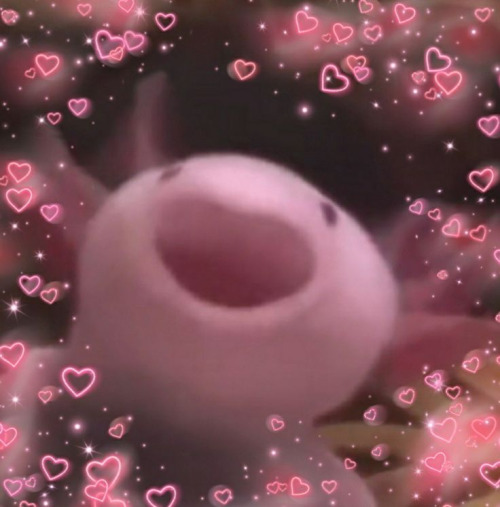
#I'M SO HAPPY HOW THIS CAME OUT AAAA#this is actually a big step for me!#I've been so busy waiting for my new computer to get set up and than my best friend came up for a vacation here#so I've just been busy and busier this past month!#and depending on what I can find I might get a part time job this summer???#every day I'm taking baby steps into becoming independent just slightly enough even though I'm disabled and had a lot of confidence issues#so I guess I've always been kinda forced fed that I wasn't smart enough or that I'm a failure#and every day I'm trying to make up for the last 15 years of depression and trauma that I missed out in life#and finding the things that make me happy again#and i can still be critical of my art compared to how far ahead my friends are due to drawing longer than I have#slowly but surely though I'm starting to like my art again#and pigment is kind of meant to symbolize that for me too#it's just funny to me how my own oc became my comfort character X'3#Pigment The Axolotl-Dog#ooooo you wanna reblog my art and draw my fursona so bad it makes you look stupid ooooo#i kid of course#Furry Fandom#Furry Art#kritaart#Pawz Drawz!
7 notes
·
View notes
Photo
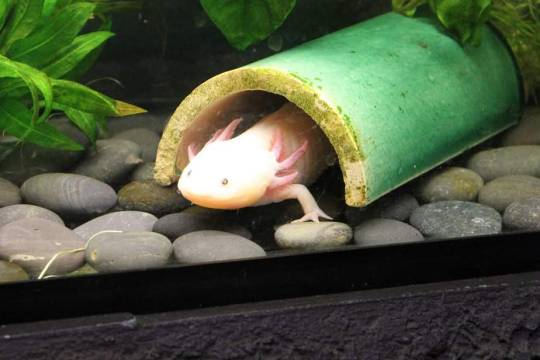
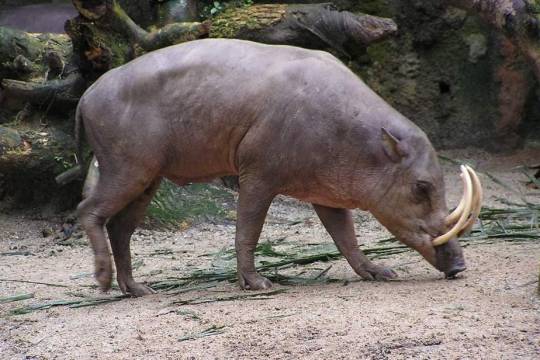
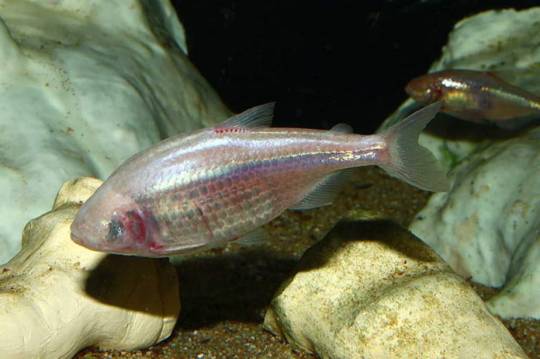
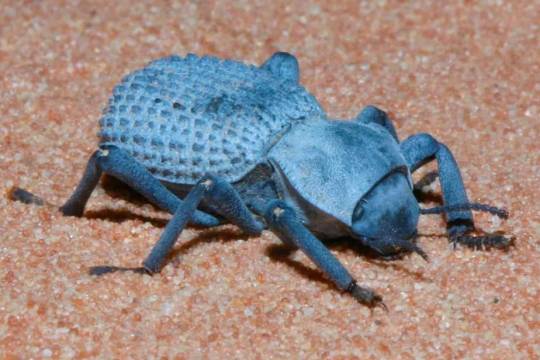
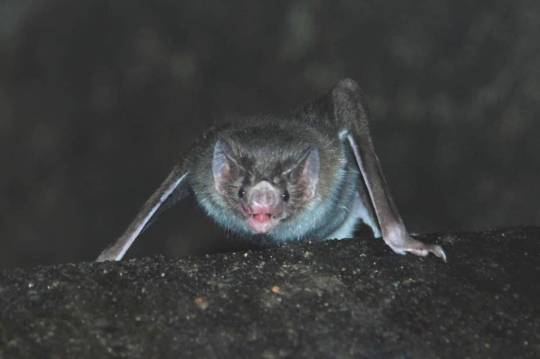
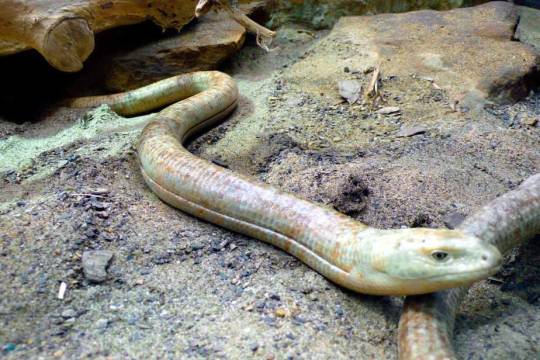
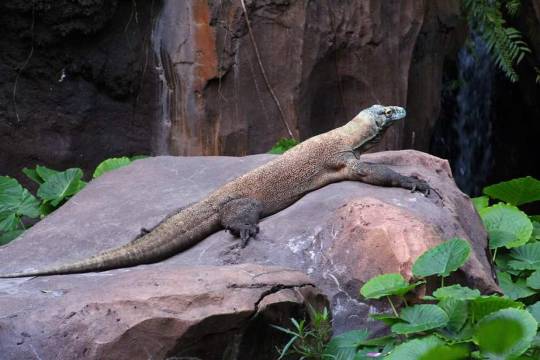
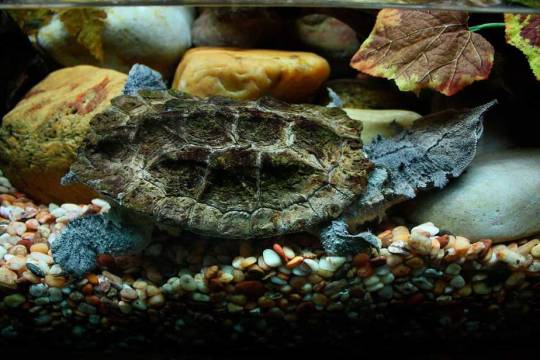

https://www.ravereviews.org/travel/50-best-zoos-and-their-weirdest-animals/
Native to Mexico, Blind Cave Fish find their way around by means of lateral lines running along the lengths their bodies. The lines are highly sensitive to fluctuating water pressure. However, not all forms of Cave Fish are truly blind: some have degenerated sight and some are totally blind, while still others have lost their eyes completely.
About 30 populations of Blind Cave Fish are known, dispersed over three geographically distinct areas of Mexico. At least three have full cave forms—blind and without pigment. Another eleven known species have cave, “normal,” and intermediate forms. At least one species has both cave and “normal” forms but no intermediates. Different forms can interbreed, making this species ideal for studying convergent and parallel evolution, regressive evolution in cave animals, and the genetic basis of regressive traits. This, combined with the ease of maintaining the species in captivity, has made it the most studied cavefish and likely also the most studied cave organism in the world.
Say it with me now: aposematic. It’s just a big word meaning that when it comes to the natural world, bright colors often signal danger. This is the case with the Poison Dart Frog. Native to tropical Central and South America, these species are diurnal with brightly coloured bodies. These mostly small amphibians are often called “dart frogs,” due to indigenous peoples’ use of their toxic secretions to poison the tips of blowdarts (though this practice is much rarer than popularly believed). Poison Dart Frogs are dedicated parents, raising their young in secluded, watery nurseries. They mate much like fish: Females deposit the eggs and the males fertilize them. While they’re occasionally seen clutching one another, these are usually territorial wrestling matches between 2 males.
If you’re anything like us, there’s nothing particularly common about a vampire bat. Found all over the Americas, the Common Vampire Bat is rare among bat species because it has maintained the ability to run on land and has relatively good eyesight. They have a unique, bounding gait when they do run. The forelimbs are used instead of the hindlimbs to propel forward, as the wings are much more powerful than the legs. Feeding mostly at night, Common Vampire Bats eat primarily mammalian blood. Their most common food sources are cattle and horses, but they’re also known to go after wild prey like the tapir. However, they do seem to prefer domesticated animals, favoring horses over cattle, and female animals over males (particularly those in estrus).
Also known as the Mexican Walking Fish, the Axolotl is actually a salamander. Native to Mexico, Axolotls are unusual among amphibians because instead of developing lungs and taking to the land, adults remain aquatic and gilled. Axolotls were sold as food in Mexican markets and were a staple in the Aztec diet. The coolest thing about Axolotls is their regenerative abilities. They are capable of regenerating lost appendages in a period of months. Some have even been found restoring less crucial parts of their own brain. They can also accept transplants from other Axolotls, including eyes and parts of the brain. Axolotls are used extensively in scientific research because of their unique healing abilities.
Matamatas inhabit slow-moving blackwater streams, stagnant pools, marshes, and swamps in northern Bolivia, eastern Peru, Ecuador, eastern Colombia, Venezuela, the Guianas, and northern and central Brazil. Strictly aquatic, Matamata Turtles are large with an oversized triangular head. The unusual head also has distinctive flaps of skin and a horn on its long snout. A Matamata’s shell resembles a piece of bark, and its head mimics fallen leaves. As it lays motionless in the water, skin flaps enable the turtle to blend into the surrounding vegetation until a fish comes close. Then the Matamata thrusts open its large mouth as wide as possible, creating a low-pressure vacuum that sucks prey into its mouth. This is known as suction feeding. After snapping shut its mouth, water is slowly expelled, and the fish is swallowed whole. Matamatas cannot chew.
The Komodo Dragon, also known as the Komodo Monitor, is found in the islands of Indonesia. These predators truly look like relics from the age of dinosaurs. Komodos are the largest living species of lizard, growing to a maximum length of up to 10 feet. In rare cases, they can reach up to 150 lbs. A nightmare with scales! The unusually large size of the Komodo Dragon has been attributed to island gigantism, with little competition from any other carnivores. Komodo Dragons dominate their ecosystems. They’ve even been known to attack humans. They hunt by ambushing prey including invertebrates, birds, and mammals. They have glands in their lower jaw which secrete several toxic proteins, shown to contain anticoagulant properties. Komodo Dragons also hunt in groups, a rare behavior in the reptile world.
The Desert Ironclad Beetle, or Blue Death-Feigning Beetle, is native to the deserts of the southwestern United States. It has been known to feign death when threatened. They’re actually popular pets due to ease of care, hardiness, and longevity. The powdery blue coloring of these beetles comes from a wax secreted throughout their bodies that keeps them from losing moisture. They cannot climb on smooth surfaces (plastic or glass). As pets, these insects require little to no additional heat or humidity. They need dry sand, something to hide in, and not much else. They don’t drink water, sourcing hydration from foods such as apples. They can even eat dog and cat food.
Native to the islands of Indonesia, Babirusas were once used as gifts to royalty. Their preferred habitats are tropical rainforests along riverbanks. While related to pigs, Babirusas do not dig with their snout like other pigs do (except in mud and swampy grounds). The diet of the Babirusa includes leaves, roots, fruits, and animal material. The strong jaws of a Babirusa are capable of easily cracking hard nuts. Male Babirusas tend to live solitarily while adult females and their young are found in groups, which can number up to about 80 individuals. The tusks of adult males are used to fight: Upper tusks are for defense while the lower are offensive weapons. If the tusks aren’t ground down regularly, they can eventually grow so long that they penetrate the animal’s own skull.
The Legless Lizard, also commonly called Pallas’ Glass Lizard or the European Legless Lizard, is found from southern Europe to Central Asia. They can reach lengths of nearly 5 feet. They are tan colored, paler on the ventral surface and the head, with a segmented appearance that makes it look like a giant earthworm. They aren’t truly legless. Small rear legs are sometimes visible. Though the legs are barely discernible, the Legless Lizard can be quickly distinguished from a snake by its ears and eyelids.
6 notes
·
View notes
Text
Axolotl 101
This is going to be a semi-long, informative post about Axolotls. You will find a Table of Contents with everything I will be covering. All facts have been checked and I will provide references as well. Any questions feel free to submit or send an ask, or even message me directly!
★ Please note this is not a care guide (TBA), however, it does have some care facts as well within it. ★

TABLE OF CONTENTS
Brief History & Habitat
Description
Appearance
Metamorphosis (please read carefully)
Age/Length/Gender
Diet
Axolotl Type (coloring)
Regeneration
Facts
Resources & Sites

BRIEF HISTORY & HABITAT
Axolotls have only ever been native to Lake Xochimilco and Lake Chalco, both found in the Valley of Mexico. Lake Chalco no longer exists whereas Lake Xochimilco is barely considered a lake. Numerous factors such as non-native fish, industrialization, and pollution have all contributed to the rapid decline of the axolotl in the wild. Because of their decline in nature, the IUCN has listed them as a Critically Endangered Species.
In the wild, axolotls who live in Lake Xochimilco live in colder waters; which have shown to rarely rise above 20 C / 68 F. And becoming even colder in the winter. This also remains true for captive axolotls; said to thrive between 15.5 C / 60 F to 18.3 C / 65 F. They also live in freshwater.
Notes
While having trouble in the wild, they have been thriving well in captivity!
They are also being used in research due to their regeneration abilities.
“Meet the nuns saving a sacred species from extinction - BBC News” an interesting video to watch imo.

DESCRIPTION

The axolotl is an amphibian that resembles salamander larvae with a bit of difference; sporting their signature gills, a caudal fin, wide heads, lidless eyes, underdeveloped limbs with long, thin fingers. Unlike salamanders, which grow out of this stage and become terrestrial, they continue to live under the water for the rest of their lives and keep their juvenile appearances even as adults. This is called Neoteny.
Metamorphosis
In some cases, axolotls have been known to metamorphosis for a couple of reasons:
In a lab setting where iodine is injected into the axolotl to encourage a metamorphosis.
Poor water/living conditions that force them to morph to escape said conditions.
I do not have enough reliable information on this, however, some owners claim that Tiger Salamander genes have been bred into their specific axolotl and has encouraged a metamorphosis in them.
Please understand that once an axolotl undergoes the metamorphosis, its lifespan is shortened and it will likely die within the next year or two. Even if there are a couple success stories; no matter what the axolotl isn’t meant to undergo this. This may be a personal and moral opinion, but I hope you agree as well.
REMINDER: PLEASE NEVER TRY TO MORPH YOUR AXOLOTL. JUST BUY A TIGER SALAMANDER.
Age / Sex / Lifespan
Axolotls will reach sexual maturity around the ages of 18-42 months. Although some sources claim it can be as early as 5 months depending on living conditions and food. Their sizes range anywhere from 15 to 45 cm / 6 to 8 inches. The average size is around 23 cm / 9 inches. Axolotls have been known to live from 10 to 15 years when kept in a good environment.

Male and Female axolotls are more easily sexed once they have fully matured. However, I was able to sex my own male axolotls after roughly 9 to 12 months of owning them. One tip I can give every axolotl owner for sexing their axolotl is to be patient. Especially when they are very young or have not reached their adult length it can be very difficult to tell.
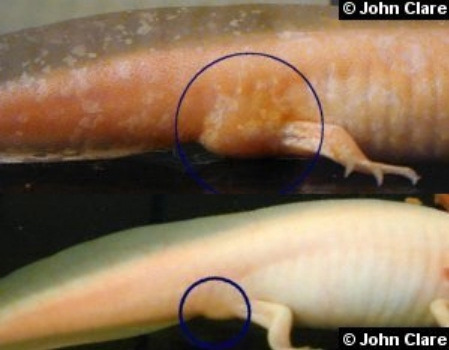
Males will have a noticeably enlarged/swollen cloacae. Their bodies will be slimmer than their female counterparts, which is easier to see when looked at overhead.
Females do not have an enlarged/swollen cloacae. Sometimes, the cloacae might ever so slightly give way to a bump as you can see in the second pic. Females will also always be rounder, as their eggs are stored on the sides of their bodies.
Breeding
Upon reaching sexual maturity, which will vary from axolotl to axolotl and shown above, they will be able to breed. Females are said to mature a little slower than males.
For captive axolotls the breeding season isn’t too peculiar; as sources claim December to June is when they’re most likely to mate. However, due to being in captivity it is possible to encourage mating at any time of the year.
If you are planning on breeding your axolotls, it is advised to wait until your axolotls are of at least the ages of 18 months. That gives them time to grow and develop into their adult bodies. Especially for females, as the breeding and laying egg process can be very stressful on your little lady. For males, it is less strenuous, and in personal experience happens very often even without a female between my two males who are homed together.
Diet
In the wild, they eat worms, insects, and small fish. In captivity earthworms and nightcrawlers are well regarded as a primary source of healthy axolotl diet. People argue that bloodworms. Here are some nutrients facts and such for three different worms. Credit to Caudata.org. Click the link for the full list and other facts on nutrition.



Coloration & Types
According to most resources, there are 4 to 5 common morphs/types of Axolotls. This is because Albino’s are sometimes classified between the golden and the white kind, making it either 4 or 5 in the eyes of the individual. Section Source Section Source II
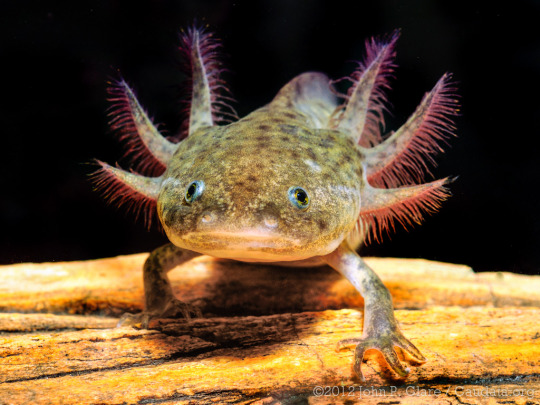
Wild Type
The most basic type.
They can have a combination of black, grey, green, and olive.
They are known to have golden/iridescent specs all around their body that will cause them to glitter and shine in bright light.
The center if their eyes are black with a golden/shiny ring around them.
Their gills can be greyish or purplish.

Leucistic
Also known as a Lucy, or a “pink” axolotl. Arguably the most well known and seen axolotl among those interested or not in the hobby and animal.
Known for their light, pale pink color.
Their eyes are darker (black or brown), making them different than an Albino.
Dark red or deep pink gills.
“Dirty Lucy’s” are the same as a regular Lucy, however, they have numerous amounts of black spots/dots around their face or body. Or both.
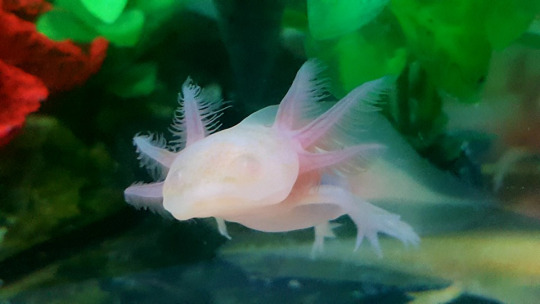

Albino
White Albino
They basically look like a Lucy but without color in their eyes, as they have no eye pigment
Gold Albino
Golden or peachy colored body, noticeably shiny patches also called iridophores.
Red/pink gills.
No eye pigment.
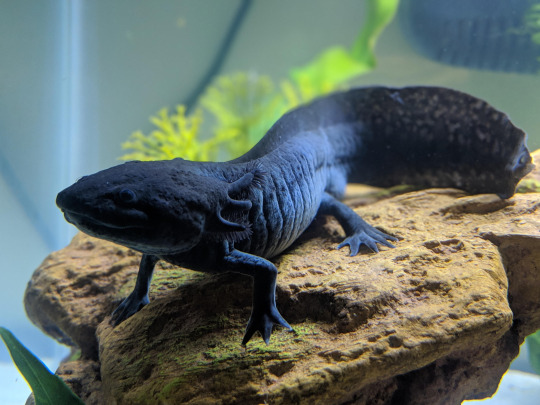
Melanoid
Often mistaken for a wild type and vice/versa. Melanoids are actually quite different.
They have increased pigment in their skin. Making them very, very dark brown or black all over.
Unlike Wild types, Melanoids cannot have shiny specs on their bodies.
Their eyes are solid black with no shiny ring around their eyes like Wild types.
Other Types & Morphs
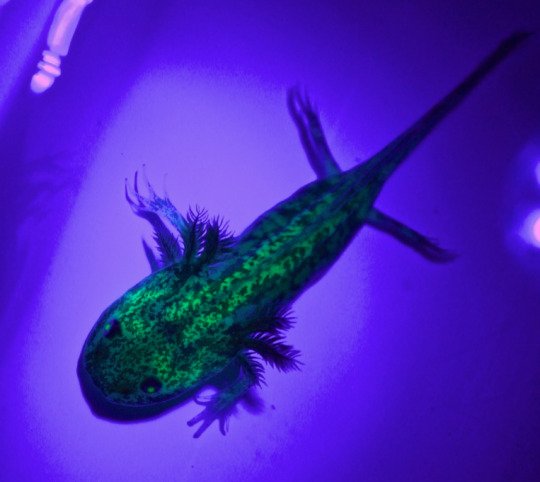
GFP
“Green Fluorescent Protein” gives the axolotl with this gene the ability to glow vibrant green under UV or Blue lighting. Less pigment in the axolotl makes it easier to see. It can be in any morph as long as it is passed on by the parent.
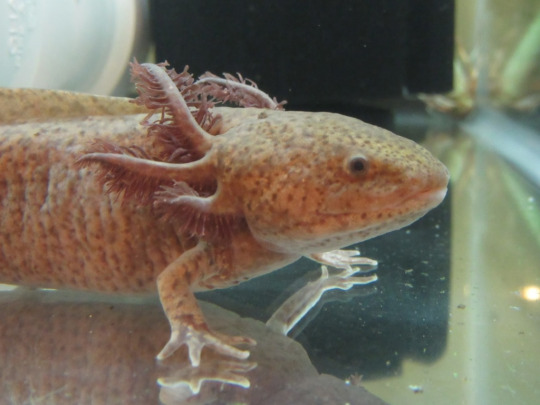
Copper
A variation of the albino. They may have red-tinted eyes, with a brown/pink body color with darker spots along the body.
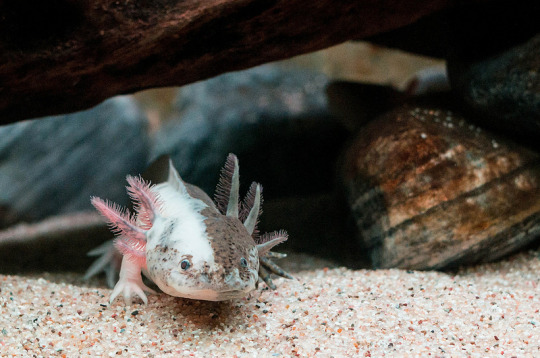
Chimera
“Chimerism in Axolotls is said to be when two eggs fuse together in development, and each side grows according to the egg it came from, often resulting in a split-down-the-middle appearance. One side can often grow at a slightly slower rate than the other.
Chimera cannot be duplicated in breeding, it is caused by an accident during development. The chances of an Axolotl being a chimera and surviving is a 0.00001% chance. There is also the argument that chimerism in Axolotls don't actually exist, but are actually mosaic and the color variation just happens to be split.”
--Axolotl City
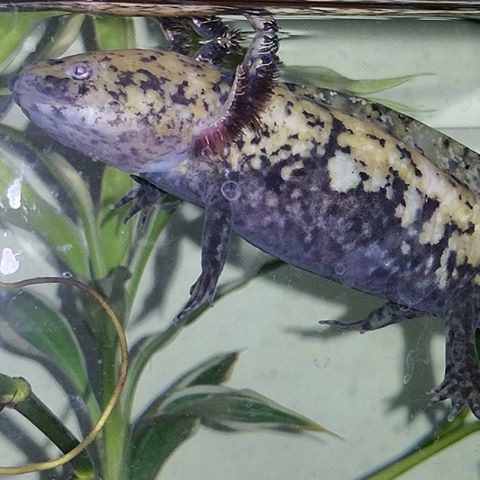
Mosaic
The result of two cells forming in development, showing the phenotype of both the cells.
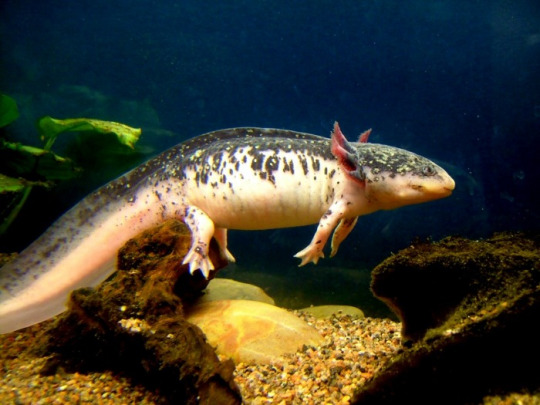
Piebald
“Piebald is when an axolotls pigmentation goes all down the body and sides, not just along the head and top, like a leucistic.”
-- Axolotl City
Sometimes heavily spotted Lucy’s are mistaken to be a Piebald. However, Piebald’s are very rare.
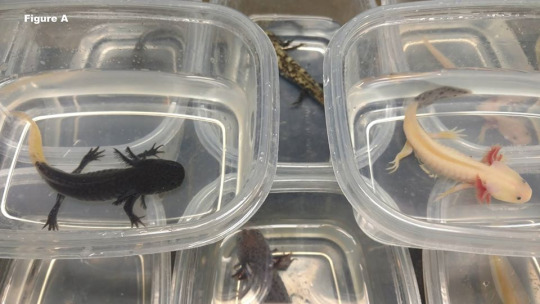
Firefly
“FireFly Axolotls are literally one of a kind. These Axolotls were produced by Lloyd Strohl II from Indiana USA in 2016. These one of a kind Axolotls are not genetically modified. They are produced by embryonic graphing. The reason for these Axolotls being produced is because Lloyd Strohl II is conducting a preliminary investigation into the distribution and activation of melanocytes in leucistic axolotls and, in particular, in mosaics. More can be read on his Facebook. “
-- Axolotl City


Regeneration
The distinct and unique feature the axolotl has is its amazing regenerative properties. Axolotls, unlike humans, when suffering the loss of a limb, will completely grow it back to normal as if it hadn’t been cut off.
Axolotls are known to regen limbs, their brain, spine, and the heart and other organs.
Picture Source

Facts
They’re super cute!
Unlike other animals, the axolotl is resistant to cancer by over as much as 1,000 times!
Mexico is the ONLY place they can be found in the wild.
To feed, it suctions up its food like a vacuum.
Axolotls can lay between 300 to 1,000 eggs!
They are illegal to own in California, Maine, New Jersey, and Virginia. In New Mexico, they are legal to own but illegal to import to other states.
According to many resources, Axolotl translates to Water Dog!
The Axolotl actually has some mythical background! Xolotl was known as a dog-headed god in the Aztec mythos. Apparently, Xolotl got mixed up in some affairs that made him concerned for his life, thus, he jumped into the lake and became an axolotl.

Resources & Sites
Axolotl.org is a well-developed site just for the axolotl. They have Housing, Feeding, Requirments, Breeding, Biology, and Books & Links for you to check out.
Caudata.org is another site/forum. They have many good, knowledgeable breeders/owners of different newt, salamander, and even axolotl species! Their axolotl forum is very active and can prove useful: forum link.
9 notes
·
View notes
Photo

(TW/CW: Blood, gore, death, bruises) [Image description: An art meme showing eyes from various pictures I've drawn on a black background. 1. Aria, a black haired, dark-skinned biracial teenage selkie in her human form. Her eyes are turquoise and she has freckles and tufted eyebrows. She has a sad expression. 2. Ayano, a black haired, light-skinned Asian teenage girl. Her eyes are dull and grey and she has acne. She has an apathetic expression. 3. Me, a white nonbinary person. My skin is blue and my hair is purple in this picture. I have hazel eyes, freckles and sparse eyebrows. I have a weary expression. 4. Vita, a purple anthro insect. They have large eyes with green sclera and slit pupils and two smaller eyes on their forehead. They are looking at something offscreen. 5. Skylla, a grey dog-headed monster and an unnamed victim, a middle-aged dark-skinned black man. Skylla is biting into the man's head. Skylla's eyes are green and the man's are brown with visible veins. Skylla has a determined expression and the man has a pleading expression. 6. Poisonberry, a purple dragon. They have two sets of red, pupil-less eyes and are wearing a birdskull headdress. They have an enthused expression. 7. Robin, a brown haired, dark-skinned black child. They have large brown eyes and small circular eyebrows. Their hair is in braids and they are wearing body glitter. They have an annoyed expression. 8. Ricky, a brown haired, light-skinned Latino child. His eyes are brown and he has sparse eyebrows. He is covered in dirt stains, cuts and bruises. He is smirking. 9. Pigment, a yellow anthro turtle with multicoloured coral hair. His eyes are pink and he has a happy expression. 10. Zeta, a purple and pink haired, white-skinned anthro axolotl. They have purple sclera and pupils and pink irises. They are wearing glasses and two-tone eyeshadow. They have an inviting expression. 11. Aria's selkie form. She has mottled grey-brown skin and brown eyes with large pupils. She is wearing a pink pearl headdress. She has a cheerful expression. 12. Agate, a green haired green-skinned gem alien. She has one green eye and one brown eye and small circular eyebrows. She has agate patterns on her face. She has a stoic expression. 13. Grace, a pink haired, light-skinned black nonbinary person. They have brown eyes with dark circles under them, tufted eyebrows and vitiligo. They are wearing pink glasses. They have a depressed expression. 14. Sour, a green dragon with pink hair. They have black sclera and red pupils and long eyelashes. They have an angry expression. 15. Zeta, again. Their hair is messy and they have blood dripping down their face. They are wearing a crown of cedar leaves and twigs. They have a dead inside expression. 16. Robin, again, but as an adult. Their hair is black and in locs, their eyebrows are thick and blocky and they have moles. They have a worried expression.] I did the eye meme that's been going around. This was fun because eyes are my favourite things to draw. Pics that these are from:
1 & 11. Link
2. Link
3. Link
4. Link
5. Link
6. Link
7 & 8. Link
9. Link (first pic)
10. Link
12. Link
13. Link
14. Link
15. Link
16. Link (second pic)
Links:
DeviantART
Twitter
Instagram
0 notes
Text
“Imperil Emperor Axolotl” by Eir-Roumar Lowell Degamo
Considered to be one of the most scientifically studied salamanders, axolotl is a carnivorous amphibian with an average lifespan of ten to fifteen years. The name axolotl (ACK-suh-LAH-tuhl) is derived from two words: atl meaning “water” and xolotl meaning “dog”, which is after the canine Aztec deity Xolotl (who leads the soul of the dead to the underworld).
Rarely White

Contrary to many beliefs, the Mexican salamanders found in the wild are rarely seen as white. Though axolotls in captivity are dominated by a white appearance, wild axolotls normally are greenish brown or black. The color of axolotls is dependent upon pigment cells known as chromatophores and of which the genes dictate the pigment of the cell. The white axolotls are a product of selective breeding of the mutant male that was shipped to Paris in 1863, thus the color white and black eyes (not albinism since albinos generally have red eyes).
Biological Headdress
The feathery headdress of the axolotl adds to the salamanders’ majestic appearance. Many might see this as a fashion sense in the animal kingdom; however the headdress is a significant part of the axolotl’s survival – the headdress acts as gills. The longs gills, and the attached filaments, increase the surface area for gas exchange.
Only in One Place

Though axolotls are commonly seen in different aquariums and laboratories all around the globe, finding them in the wild however is more difficult. These animals can only be found in lakes and canals in Xochimilco, Mexico.
Neoteny
Believe it or not, axolotls grow but never mature. Axolotls exhibit a form of neotony: a creature can reach maturity without undergoing metamorphosis. They retain their feathery external gills, along with the tadpole-like dorsal fin which runs almost the length of the body, and can breathe underwater despite growing a pair of lungs. Furthermore, biologist Randal Voss further stated the advantage of such process.
“The one thing that neotenic species have an advantage is that if you don’t undergo metamorphosis, you’re more likely to reproduce sooner.”
Regenerative Ability

Regeneration in amphibians is fairly common; however axolotls seem to a lot better n showing off: regeneration without any scars. The animal can regenerate limbs, jaws, spines, and even their own brains without scarring. A University-of-Montreal professor named Stephane Roy explained the phenomenon.
“You can cut the spinal cord, crush it, remove a segment, and it will regenerate. You can cut the limbs at any level – the wrist, the elbow, the upper arm – and it will regenerate, and it’s perfect. There is nothing missing, there’s no scarring on the skin at the site of the amputation, every tissue is replaced. They can regenerate the same limb 50, 60, 100 times. And every time: perfect.”
Instant Adult
With a sudden mutation or a shot of iodine, an axolotl can become an “instant adult”. The shot (or mutation) leads to a rush of hormones that leads to a sudden mutation. As a result, the axolotl’s appearance is greatly similar to its close relative, the tiger salamander, though breeding (only with their own kind) remains the same.
Yummy?

Believe it or not, axolotls are edible. Historically, axolotls are eaten by Xochimilco natives and known as a favorite as it is usually served in whole with cornmeal. Francesco Clavigero, in 1787, described his experience.
“…the axolotl is wholesome to eat, and is much the same taste with an eel. It is thought to be particularly useful in time of consumption.”
Currently, axolotl can still be eaten in selected restaurants, mostly in Japan. A restaurant in Osaka serves the axolotl whole in deep fried – which apparently taste like white fish but with a crunch.
Critically Endangered
Looking how the axolotl can only be found in one place and the serious extraction of the organism from the stated area, it is no surprise that the axolotl is considered as a critically endangered species. However aside from that, habitat loss, pollution, and the introduction of invasive species such as tilapia and carp naturally contribute to issue.
In order to resolve the existing threat, scientists and researchers-alike constructed “shelters” made from reeds and rocks to filter the water and create a more desirable living place. Though the efforts have been evidently clear, the population of the axolotl continues to decline. In the 1998 survey, 6000 wild axolotls have been documented to reside in the area; however recently, the population has been approximated to be less than the documented. Furthermore, for a brief period in 2014, scientists failed to find any trace of the organism and directly inferred the extinction of the organism. Fortunately, in recent years, axolotls have been found roaming in the water and though it is unideal, the wild gene might have gone extinct however axolotls in captive continue to thrive.
Axolotls are seriously an amazing creature and could provide different aids with the human society. For instance, the organism’s regeneration could be harnessed to provide cure or aid in medical operation. However, with its declining population the wild, the dream for “miracle healing” would be stagnant and unreachable. Nevertheless, with outmost efforts to save the axolotls, is an effort to the save the ecosystem and the organisms living in it.
1 note
·
View note
Text
Phantasmagorical Creatures of the Real World
As well as characters I want to create creatures to inhabit the fantasy world I create.
Axolotl
The Axolotl , is a neotenic salamander, closely related to the tiger salamander. Although the axolotl is colloquially known as a "walking fish", it is not a fish, but an amphibian.
Axolotls vary in colouration when bred in captivity, including grey, shades of brown, leucistic (white with black eyes), golden albino, white albino, as well as other varieties, such as the melanoid (a near-black animal).
It is named after the Aztec Deity Xolotl the water dog.

Their feathery headdresses are not just for show, they are its gills, and the filament shape increases the surface area for gas exchange.
The are able to regenerate lost limbs, organs, spines and even their brains with no scarring.
Plus they’ re super cute.

Kinkajou
The kinkajou is a rainforest mammal of the family Procyonidae related to raccoons, and the ringtail.
It is the only member of the genus Potos and is also known as the "honey bear".

Inhabiting the forests of Central and North America, this omnivorous critter uses its prehensile tail to climb and on cold days to cuddle up and keep warm in tree holes.
They are nocturnal and have few predators in the wild.
The rarely ever venture to the forest floor and are arboreal.

Betta Fish
The Siamese Fighting Fish, also sometimes colloquially known as the Betta, is a species in the gourami family which is popular as an aquarium fish.
They are a very territorial fish and it is unwise to house two males together.
Their beautiful colouration makes them stunning to look at and their patterning is so unique.
Their fins almost look like feathers floating in the water.

Pine Marten


Barn Owl- Melanistic
The melanistic Barn Owl at the fore front of the photo is beautifully rare to see, as the DNA mutation that causes the high concentration of pigment in the feathers is so rarely recorded.

Blue Dragon Sea Slug
this weird slug thing does look like a dragon in some respects. When I see it I find myself reminded of the Legendary Pokémon Lugia, due the wing-like appendages.

The gradient blend between the blues and white is a stunning contrast and I find myself liking the wing-like body parts a lot and might decide to adapt them to a design later on during my creative process.
Obviously there’s more blue on the sea slug but Lugia’s wings reminded me of the slugs wings.

0 notes
Text
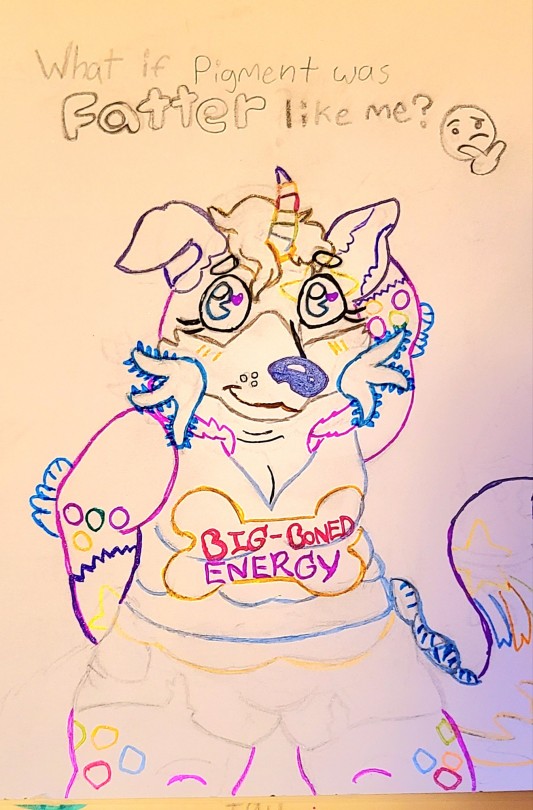
Me: I got new gel pens for Christmas! :D what should I draw first??
My brain: DRAW TUMMY NOW!!!!
So I decided to draw my fursona with my accurate bodybuild as im getting more confident in drawing her bigger. I might make this an actual drawing, but for now, it was a fun warmup!
#also yes fat furry enjoyers feel free to interact since ill be honest fat has been on my brain#mostly from thinking about my favorite holiday foods#which i didnt get to bake as much this year sadly!#I just didnt have the energy this holiday season#i had the Christmas blues for a while now since my brother isnt home...#but thats enough venting for now. have a dog-axolotl tumby#she got fat for Christmas hehehe#Pigment The Lotl-Dog#Fursona#sfw fur art#chub art#fatfur#Furry
7 notes
·
View notes
Text
SO LAST NIGHT, OUR TABLET FINALLY CAME! So even though I don't like medibang all that much, I drew a quick something since I need an icon so...

YIPPEE TBH PIGMENT! 🥳
#I'm drawing with my fat fingers since theres no stylus for our tablet but honestly its cute!#and it still looks like pigment despite the messiness#expect more digital art from me soon! im very excited about it#furry#tbh creature#autism creature#lei's art thingies#Pigment The Axolotl-Dog
11 notes
·
View notes
Text

WIP time!
This game has a physical choke hold on me, so I decided to attempt the art style with my fursona, Pigment!
Hm... would I be called “Cult Of The Water-Dog?” X’D
#Pigment The Axolotl-Dog#also I changed pigment's colors again so they mesh a bit better#pink/purple and aqua are some of my favorite main colors#plus it's more happier colors and fits better with Pigment's theme of being bright and colorful#I'll finish this soon I was just really proud of this doodle!#it's been a while since I had copied another art style from some of my fave things atm#expect more art of this game soon from me btw ;3c#Cult Of The Lamb#cults //#I also made this since I wanna comm someone to draw my doggo in the style of this game but ALAS no munz for cool leg...#or in this case no munz for cool artz...#Lei's Art Thingies#Furry
5 notes
·
View notes
Photo

My big piece for pride is FINALLY done! ❤️💛💙
This was meant to be an experimental doodle and getting used to drawing my new fursona in some cartoony poses, as pigment stretches for comedic affect! So what started as wanting to draw a noodle, Pig became a symbol of love. <3 How fitting!
I wanted to try combining painting too, and while it gave me some troubles I liked the result. :D The words are positive affirmations on my journey of self-love, as plague ages have truly made me discover who I really am and what I aspire to be. 🌈
#I wanted to make this my icon but the scanner cropped it so ah well#plus it might be too big for tumblr but I'd like to revisit this digitally too!#I just don't have clip paint studio yet :'D#pigment doesn't just say pan rights but she also says trans rights and non-binary rights too!#they might look cute but don't worry pigment will be your best guard axolotl-dog and eat transphobes for us all <3#I'm so glad my messy brush strokes smoothed out with the second coating too!#my stepsister is teaching me how to paint you see and I'm inspired by her so I want to try painting more too#Lei's Art Thingies#Furry Fandom#SFW Furry#Pride Month#Pansexual#Furry#Cute Art#Traditional Art#Pigment
7 notes
·
View notes
Text
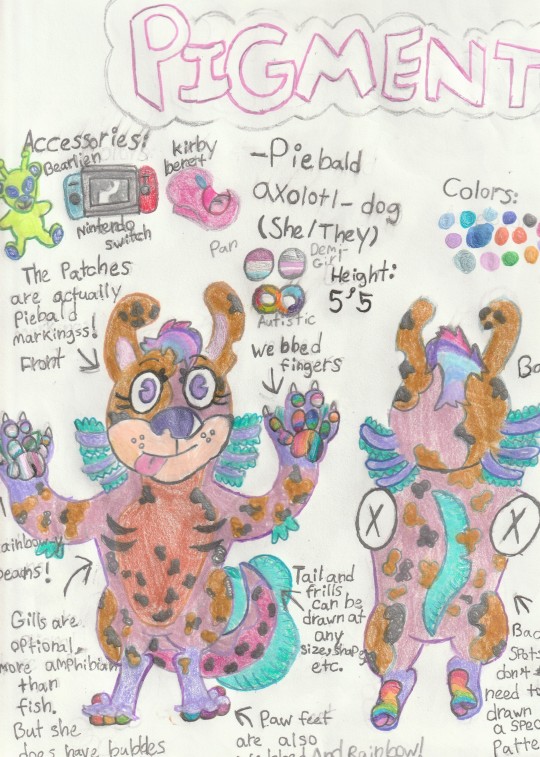
POV: You’re going to ask what my fursona looks like, so you can draw them, and I will info dump you out of pure love. :3c
Meet Pigment, the piebald axolotl-dog! Basically my “true” fursona I guess you could call it? I’m really excited to have this ref finished, and it actually turned out decent!
If you can’t read my writing (I blame the scanner >_<) I’ll give the rundown of details:
-Rainbow-y beans!
-Webbed fingers
-Gills are optional, more amphibian than fish when drawing. But when I do draw them, bubbles come out!
-Paw feet are webbed, but also rainbow-y!
-Tail and frills can be drawn as any size, shape, etc...
-Back markings don’t need to be drawn in any specific pattern!
And I didn’t write this down, but hair colors can be dyed in any color. Just have fun with it!
Also some fun facts: Did you know that the name axolotl stems from the Aztec language, and it can mean either water dogs or water monster? :O Might wanna watch your toes around the water surface...
#now... for the real challenge. waiting for my mutuals to notice and say something in discord ;w;#ooooo you wanna reblog my art and draw my fursona so bad it makes you look stupid ooooo#seriously though I was up at 7am inking this whole thing so PLEASE validate me or I will cry <3#Fursona#Furry Fandom#SFW Fur Art#Lei's Art Thingies#Hybrid Furry#Toony Art#Pansexual#Demi Girl#Cute Art#Traditional Art
9 notes
·
View notes
Text
What da dog doin?🤔

I’ve nailed down my new fursona’s design! Much as I hate my own static poses, drawing them swimming like last time is a lot harder when you’re attempting a reference.
Anyway, meet Pigment, the Water dog! They're half axolotl, half dog, and they like tacos. :3c As well as they represent how I see myself and what I want my art to be as a mascot of sorts? It’s hard to explain, but I’m not going to worry about it. It’s just a fun way to make me love my own art again and to heal the toxic thought process I held on myself for years without getting too deep about it. For now, this is just a WIP to post!
#also this might be my first art post on my new blog so :D#here's hoping I don't fuck up the ref sheet like I always do ;w;#making them traditionally is so much harder I wish I felt confident posting digital art#Furry#Axolotl#Waterdog#Cute Art#Traditional Art#Fursona#Furry Fandom#SFW Furry#Lei's Art Thingies
6 notes
·
View notes